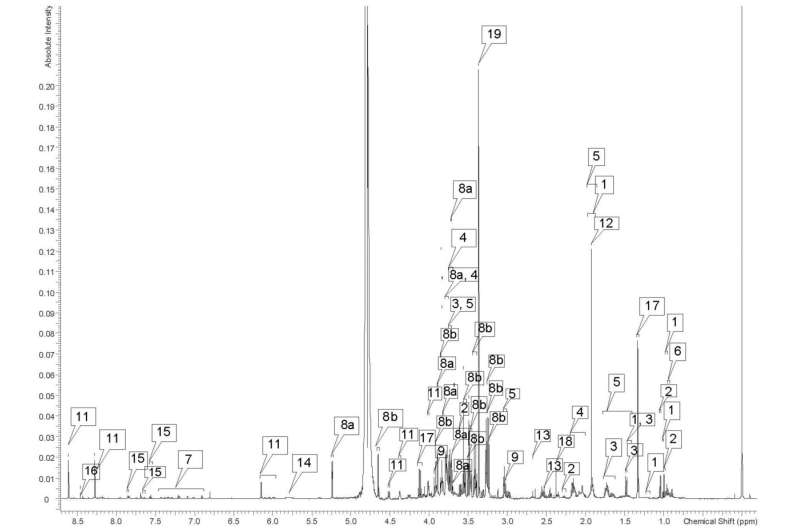First assessment of metabolites in African savanna elephants

North Carolina State University researchers have conducted the first assessment of metabolites in African savanna elephants (Loxodonta africana), an important step in understanding the relationship between metabolism and health in these endangered animals.
Metabolomics is the study of metabolites—the small molecules, such as amino acids, lipids and sugars, which are the dynamic building blocks of metabolism in animals. Understanding which metabolites are present, and in what amounts, can provide valuable insights into the relationship between an animal's diet and its health.
"The bottom line is that we have taken the first step in what will be a lengthy process to advance our understanding of the relationship between metabolites and elephant health," says Michael Stoskopf, corresponding author of the paper on this work and a professor of clinical sciences at NC State.
For the study, researchers collected blood samples from six African savanna elephants at the North Carolina Zoo. All of the elephants were healthy adults and received the same diet.
"We've established a technique that allows us get an accurate snapshot of metabolites in these elephants," Stoskopf says. "We found little difference in metabolites among the six elephants, likely due to their sharing a common diet.
"This work represents a good start," Stoskopf says. "There were no particular surprises here, but establishing the metabolites present in elephants that are on a very specific diet gives us a snapshot of metabolism in these animals."
"Elephants are highly adaptable, and live in a wide variety of environments on a wide variety of diets," says Kimberly Ange-van Heugten, co-author of the paper and a teaching associate professor of animal science at NC State. "This study should serve as an excellent jumping off point for studies that can offer additional insights. For example, with precise analytical and research techniques we could potentially see how changes in diet might affect an elephant's metabolomics."
The paper, "Observable Metabolites and Metabolomic Sampling Protocols for Managed African Savanna Elephant (Loxodonta africana) Whole Blood Using H-NMR Spectroscopy," is open access and appears in the journal Metabolites.
More information: Jordan Wood et al, Observable Metabolites and Metabolomic Sampling Protocols for Managed African Savanna Elephant (Loxodonta africana) Whole Blood Using H-NMR Spectroscopy, Metabolites (2022). DOI: 10.3390/metabo12050400
Provided by North Carolina State University



















